Timeline:
- Launched February 5, 1967
- Imaged Moon: February 15 to 23, 1967
- Impact with Moon: October 9, 1967
- Apollo landing site survey mission
I was thinking maybe twelve when I was asked this question. Try over hundred if you count other countries’ missions besides just America’s, like the Soviet Union’s, China’s, Japan’s, and Indian’s. And if you include all missions: flybys, failed, and successful. Over hundred. I counted them on Wikipedia.
Why so many?
Curiosity? Exploration? Yes. But also, did they discover something on one of those missions that needed further investigation? Such as the photograph taken by Lunar Orbiter III in 1968 which appears to show a spacecraft lodged within the Crater Manilius and a 60 mile highway on the moon. Yes—highway on the moon.
Lunar Orbiters
Five unmanned Lunar Orbiter missions were conducted by the US between 1966-1967. Their purpose was to find potential landing sites for the manned Apollo missions by photographing the surface of the moon.
All five Lunar Orbiter missions were successful and 99% of the moon’s surface was mapped. Lunar Orbiters’s images were the first photographs taken from lunar orbit and the first pictures of Earth as a whole.
Altogether the Orbiters returned 2180 high resolution and 882 medium resolution frames. The micro-meteoroid experiments recorded 22 impacts showing the average micro-meteoroid flux near the Moon was about two orders of magnitude greater than in interplanetary space, but slightly less than the near-Earth environment. The radiation experiments confirmed that the design of Apollo hardware would protect the astronauts from average and greater than average short term exposure to solar particle events.
Forgotten Tapes
Once the Lunar Orbiters’ missions were deemed successful and landing sites were located for Apollo, the data — roughly 1,500 tapes — was forgotten and archived by the government in Maryland for twenty years.

The tapes were returned to NASA’s Jet Propulsion Lab (JPL) in Pasadena, California. In 1986 it became the responsibility of Nancy Evans, JPL archivist, to determine if the tapes should be preserved or trashed. She decided the tapes needed to be preserved and began her own mission to find funding.
She and a few colleagues were able to acquire four Ampex FR-900 tape drives — specialized equipment they needed for their recovery project. (Image of Ampex by: https://en.wikipedia.org/wiki/User:Misternuvistor)
The project was successful at getting raw analog data from the tapes, but in order to generate the images, they discovered that they needed the specialized demodulation hardware that had been used by the Lunar Orbiter program, which no longer existed. They attempted to get funding from NASA and private sources to build the hardware, but were unsuccessful.
The tape drives sat in Nancy Evans’ garage, until the Lunar Orbiter Image Recovery Project (LOIRP) —funded by NASA, SkyCorp, SpaceRef Interactive, and private individuals — was formed to digitize the original analog data tapes from the five Lunar Orbiters’ missions. By July 2008, the team had moved into a closed MacDonald’s and appropriately named it McMoon. In 2009, some of the first images recovered were announced by the team.
Steve Jurvetson‘s Discoveries
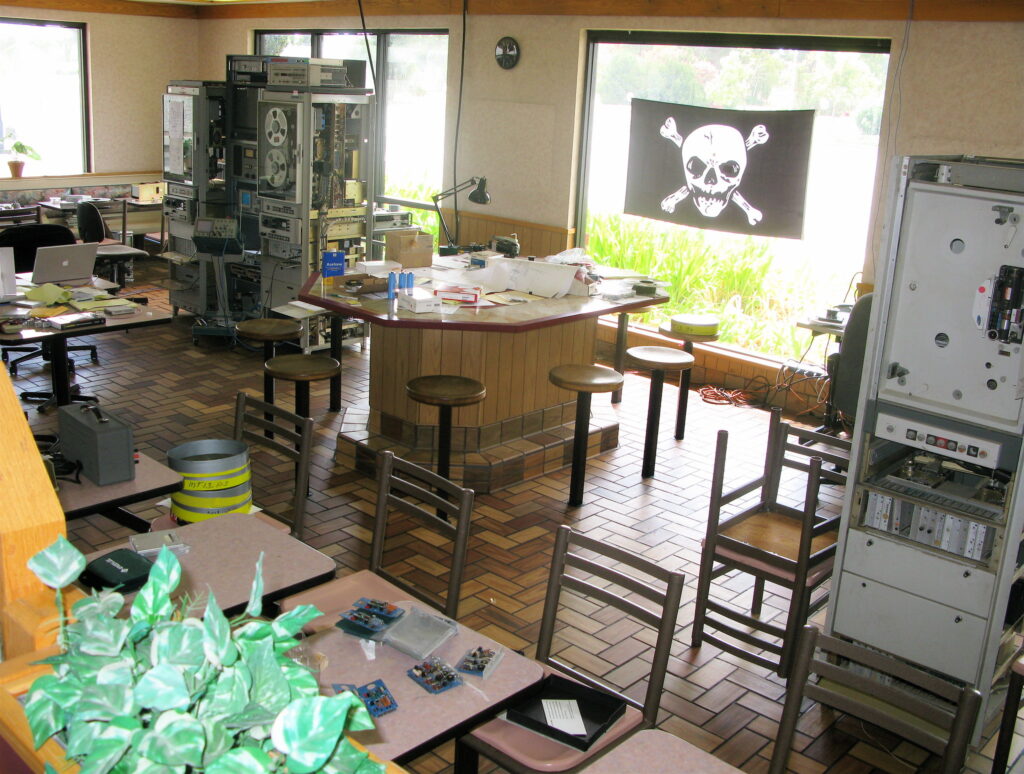
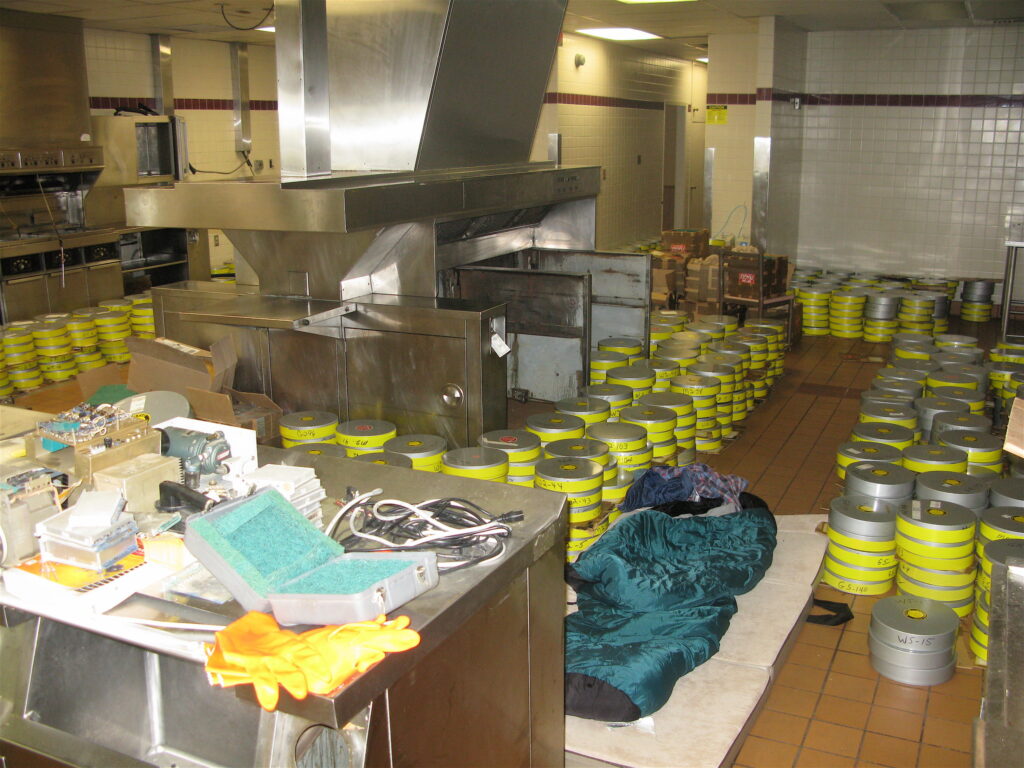
Steve Jurvetson Writes:
Behind the counter of an abandoned McDonalds lie 48,000 lbs of 70mm tape — the only copies of extremely high-resolution images of the moon. However, the spacecraft did not ship this film back to Earth. Instead, they developed the film on the Lunar Orbiter.
(The film was developed in-orbit, and then scanned by a photomultiplier for transmission to Earth.)
(Probe Note: A Photomultiplier is a device that converts photons into an electrical signal.)
Raster then scanned the negatives with a 5 micron spot (200 lines/millimeter resolution) and beamed the data back to Earth using yet-to-be-patented-by-others lossless analog compression.
Three ground stations on Earth (one was in Madrid, Spain; one in Wommera, Australia; and one in Goldstone, California. ) recorded the transmissions on these magnetic tapes. Recovering the data has proven to be very difficult, requiring technological archeology. The only working version of the Ampex tape player ($300K when new) was discovered in a chicken coop and restored with the help of the original designer.
There is only one person on Earth who still refurbishes these tape heads, and he is retired. The skills to read this data archive are on the cusp of disappearing forever. Some of the applications of this project, beyond accessing the best images of the moon ever taken, are to look for new landing sites for the new Google Lunar X-Prize robo-landers, and to compare the new craters on the moon today to 40 years ago, a measure of micrometeorite flux and risk to future lunar operations. (Information by Steve Jurvetson, September 20, 2008. Except for the citations from Wikipedia.)
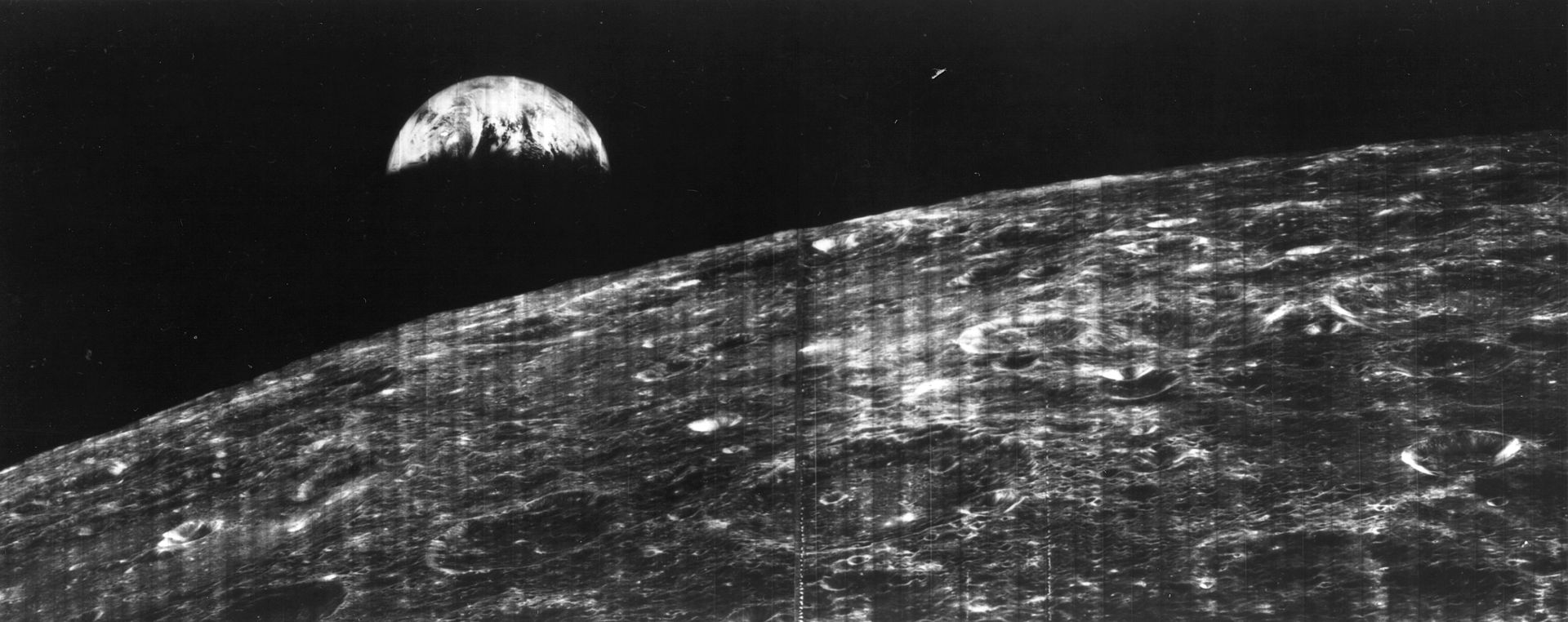
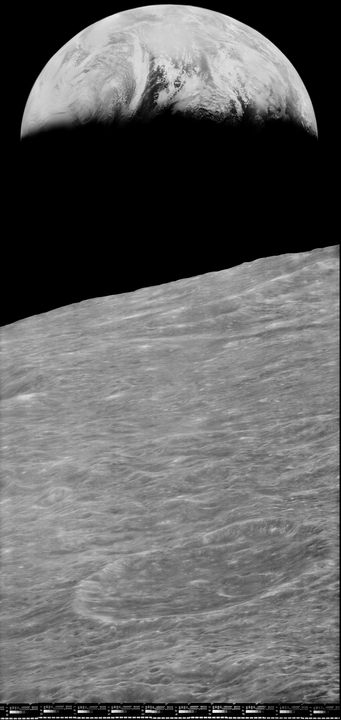
Still. That One Small Word
- Is it possible the Lunar Orbiters discovered something?
- Why so many missions to the moon? Unless there is something there.
- Why were the tapes forgotten and not analyzed at the time? Unless, they were.
- Why bury the tapes for decades until the technology to unlock their secrets became obsolete? Unless it was done on purpose.
- Even if the YouTube video and photos of the spacecraft and highway have, in some way, been altered, isn’t it still intriguing to wonder at all we don’t know?
(Probe Note: Grant, a friend of mine and former student, gave me the original news tip on the Lunar Orbiter III find, accompanied with a YouTube video. (Thank you, Grant.) When I was updating this blog post, I found that the original video was no longer available on YouTube. (A bit suspicious don’t you think?) I did find the version below, however, which is remarkably similar, if not the same. Hmmm??)
https://youtu.be/wFI7Iome7Fc
- Urban Legend in the Making - April 22, 2024
- Coghlan’s Traveling Coffin Urban Legend - April 4, 2024
- Richmond Vampire Urban Legend - March 7, 2024
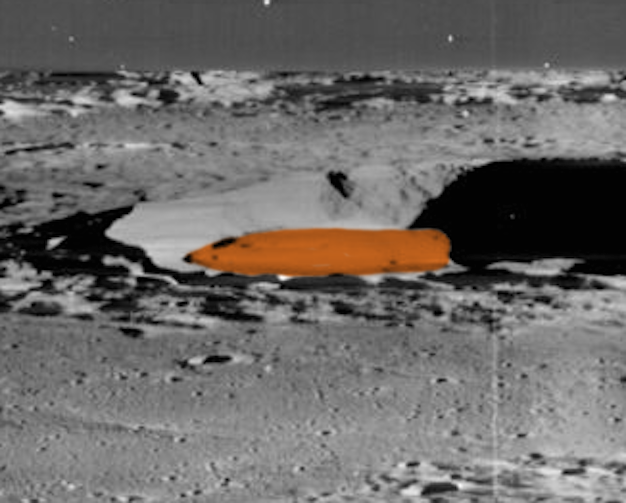

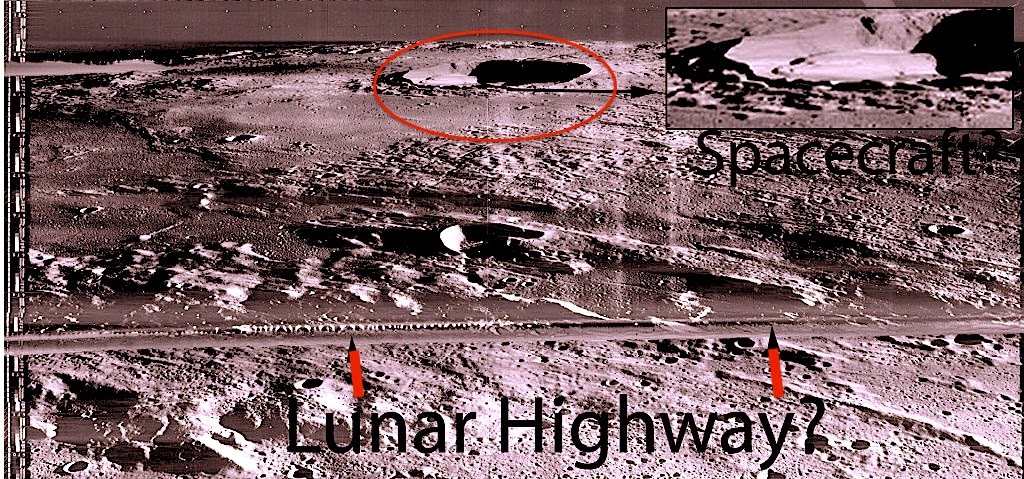

2 replies on “1,500 Forgotten Tapes Reveal A Hidden Spacecraft and Sixty Mile Highway On the Moon.”
In preparation for the moon landings, I worked with many of the Lunar Orbiter images as part of my study in college. Although I can’t speak about some of the images discussed here. The ones dealing with what are called a highway on the moon I can discuss.
This type of artifact is seen in many of the lunar orbiter photos. They are the result of both image processing and data transmission errors inherent in the technology of the day.
Consider this. These photos were shot by Lunar Orbiter on film much like Polariod of the day. Those images were scanned on the spacecraft by a single stage photomultiplier,, slowly turning the images, pixel by pixel, to values between 0 and 255 levels of brightness. This image data was sent back to earth to be reassembled into images like the old fax machines. The bottom and or top of many images had horizontal bars where no data was present. Pieced together for images with a wider field of view., these horizontal blanks couldn’t be avoided. These blank rows of data are the highway artifact discussed in the article.
Thank you, Tom. As always, you offer factual information which helps us to formulate accurate opinions. -Clara